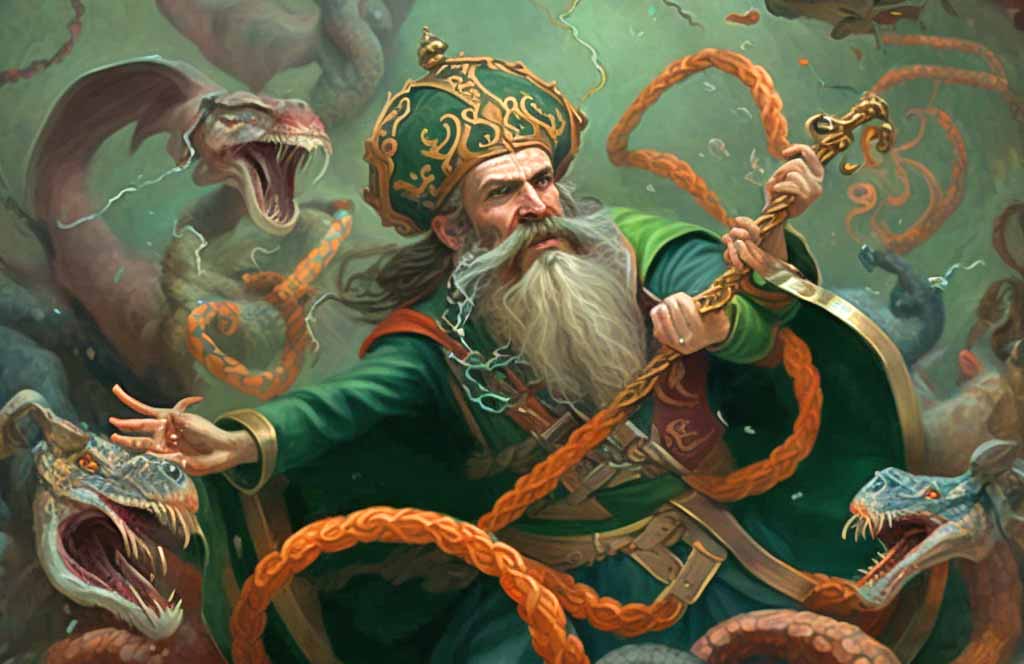
There were no snakes in Ireland when Saint Patrick arrived, so he couldn't have banished them
Why is the legend that Saint Patrick banished snakes from Ireland so widely propagated in the modern age, when we know that there were no snakes on this island when he arrived in the 5th century?

Portrait of Robert Lloyd Praeger by Sarah Cecilia Harrison.
The botanist, geologist and archaeological explorer Robert Lloyd Praeger, in his well-known 1937 book The Way That I Went, talks about the legend of Saint Patrick banishing the snakes from Ireland, pointing out the absence from Ireland of most reptiles, including many that are present in England. I thought it would be useful to quote what he had to say about all that in this blog post. So here goes:
An imposing northern outpost of this sea of hills is Croaghpatrick (St. Patrick’s rock, commonly shortened into “The Reek”), long looked on as a holy mountain. It is now the scene of a great annual pilgrimage, when thousands of people climb the stony path to render, in and around the little chapel which has in recent times been erected on the summit, homage to the patron saint of Ireland. The hill is over 2500 feet high, and the loose quartzite which forms the track is rough and slippery, so the ascent is no mean feat for the old or the infirm.
Perhaps its very difficulty provides an incentive. Certain it is that remarkable scenes of courage and devotion are witnessed on Croaghpatrick on the last Sunday in July. No doubt the beautiful form of the mountain and its unique position on the very verge of Clew Bay with its myriad green islands contributed to its selection as a place of worship, for Patrick travelled far over Ireland and no doubt stood on many hilltops.
While, as seen from north or south, Croaghpatrick forms a long ridge with a high central dome, see it from east or west and the shoulders become gathered together in front of or behind the main peak, so that from base to summit it forms a perfect and lovely cone.

Croagh Patrick mountain in Co. Mayo.
As one comes westward across the Central Plain, somewhere about Claremorris the eye is arrested by this wonderful outline, towering heavenward beyond where the long bare ridge of the Partry Mountains sinks down towards Westport—an outline comparable to that of famed Fujiyama; and one feels little surprise that both should be looked on as holy places.
Their terrestrial origin, however, is widely different. Croaghpatrick is not, as Fujiyama is, a volcano, though, like the Sugarloaf in Wickow and Errigal in Donegal, it is among ungeological people often believed to be so.
Quartzite, of which many of our oldest mountains are composed, and which is a much hardened and altered form of sandstone, insoluble and intractable, tends by its superior hardness to weather out in the course of ages, and to remain while the rocks which surround it are denuded and lowered by rain and frost and wind through long periods of time; and owing to the particular manner in which quartzite disintegrates, its masses tend to assume a conical form.
The fact that the disintegration produces not soil, but broken fragments and thin sand, causes these quartzite cones—as particularly in the case of Errigal—to be streaked with scree as many volcanoes are streaked with lava-flows, and helps to support the plutonic fallacy.
I remember standing on the summit of “The Reek” one Easter evening of wonderful clearness. It was dead calm. Clew Bay was like a mirror. All the mountains to north and south—Mweelrea, Sheffry, Partry, Nephin and Nephinbeg, and the distant hills of Achill, were of intensest purple, and Clare Island hung like a grey mirage across the mouth of the bay.
As the sun sank towards the western ocean, it fell full on Croaghpatrick, and the shadow of the cone, stripped of its supporting shoulders, lay like a great triangle over the eastern plain, bluish against a rosy haze that covered the sunlit ground. As the sun dipped, this shadow became longer and longer, till it seemed to reach the horizon, a fascinating sight. And then abruptly the sun was gone, and I had to hasten down the stony descent to escape from the rough mountainside before darkness fell.

Saint Patrick battling with the snakes in Ireland. Conceptual image made with Midjourney AI.
The particular legend which connects the patron saint of Ireland with Croaghpatrick concerns the banishment from the country of all snakes and other distasteful creatures which, it is implied, inhabited the island until his day. Like many another legend which cannot be taken literally, this one embodies an interesting scientific truth—the absence from Ireland of almost all reptiles and amphibians, including many which are frequent in Great Britain.
The zoologist and geologist explain this by pointing out in the first place the undoubted truth that Ireland and Britain not very long ago (speaking in terms of geological time) formed part of the Continent. They are as a matter of fact separated from it by very shallow seas, and an upward movement of the land or downward movement of the sea (which comes to the same thing) of quite small amount would suffice to spill the water off the shelf on which these islands stand, and leave a continuous continental land-surface.
Such movements, slow and imperceptible within a human lifetime, are continually in progress on this thin cindery crust which covers the molten Earth. Furthermore, there is plenty of evidence to show that the Irish-English land-connection broke down at some time previous to the English-French—in other words, that the Irish Sea came into being before the Straits of Dover. This allowed continued free migration of animals and plants into Britain from the Continent for some time after the door leading to Ireland had been shut.
Thus, it is held, is explained the absence from Ireland of some familiar British animals and plants; they were late-comers of the general westward migration, and succeeded in crossing by land into Britain (where many of them are widely spread), but could get no further westward without passing the Irish Sea, which evidently proved a formidable barrier.

Saint Patrick battling with snakes in Ireland. Conceptual image made with MidJourney AI.
So it is that Ireland has and apparently never had any Vipers or Slow-worms or Moles, nor the Common Toad nor the Crested Newt; nor among plants such widespread British species as the Needle Furze, the Sweel Milk-Vetch, Herb-Paris, Lily of the Valley and others. But we are not quite free of reptiles and amphibians in Ireland. There is the Common Lizard, the Common Newt (often mistaken one for the other, especially after the latter leaves its aqueous breeding-ground and takes to the land), and down in Kerry the little Natterjack Toad. The Frog is also with us, but in its case the question has been raised as to whether it is an old native or a comparatively recent introduction.
Is it really one hundred per cent Irish, in the sense of having been here “always”? This question was a subject of discussion in early volumes of the Irish Naturalist, in which Dr. Scharff and Mr de Vismes Kane were the principal protagonists. The evidence contra is furnished by several old writers, whose comments on the subject are so quaint that I am tempted to quote from them. Thus Donatus, Bishop of Fiesole in the ninth century (and subsequently canonized), wrote a rhymed account of Ireland in which he says,
Nulla venena nocent, nec serpens serpit in herba
Nec conquest canit garrula rana lacu,[i]
which Jack Lindsay[ii] renders :
No snakes are creeping there with venomed guile,
No raucous frogs disturb the rustling reeds
—a fairly free translation.
Then Giraldus Cambrensis (who was secretary to Prince John, son of Henry II, when the former visited Ireland), writing in 1187, devotes a whole chapter (his chapters are very short!) of his Topographia Hibernica to an account of a Frog which, to the amazement of all, had been captured in Ireland. His comments are so interesting that I quote from them at some length (Bohn’s translation, pp. 47-51):
[In Ireland] “there are neither snakes nor adders, toads nor frogs, tortoises nor scorpions, nor dragons. It produces, however, spiders, leeches, and lizards; but they are quite harmless . . . It does appear very wonderful that, when any thing venomous is brought there from other lands, it never could exist in Ireland. For we read in the ancient books of the saints of that country, that sometimes, for the sake of experiment, serpents have been shipped over in brazen vessels, but were found lifeless and dead as soon as the middle of the Irish Sea was crossed. Poison also similarly conveyed was found to lose its venom, when midway on the waters, disinfected by a purer air. . . . I have also heard it said by merchants, who pursued their adventures on the ocean, that on some occasions, having unloaded their ships in an Irish port, they found toads in the bottom of the hold; and having thrown them on shore in a living state, they immediately turned their backs and bursting their bellies died, to the astonishment of many who witnessed it. . . .

Popular tradition states that Saint Patrick banished snakes from Ireland, but he couldn't have done so, because there were none!
“Nevertheless, a frog was found, within my time, in the grassy meadows near Waterford, and brought to Court alive before Robert Poer, who was at the time Warden there, and many others, both English and Irish. And when numbers of both nations, and particularly the Irish, had beheld it with great astonishment, at last Duvenold, King of Ossory, a man of sense among his people and faithful, who happened to be present, beating his head, and having deep grief at heart, spoke thus: ‘That reptile is a bearer of doleful news to Ireland’. And uttering a sort of prognostic, he further said, that it portended, without doubt, the coming of the English, their threatened conquest, and the subjugation of his own nation.
“No man, however, will venture to suppose that this reptile was ever born in Ireland; for the mud there does not, as in other countries, contain the germs from which green Frogs are bred. If that had been the case, they would have been found more frequently, and in greater numbers, both before and after the time mentioned. It may have happened that some particle of the germ, hid in the moist soil, had been exhaled into the clouds by the heat of the atmosphere, and wafted hither by the force of the winds; or perhaps, that the embryo reptile had been swept into the hollow of a descending cloud, and, being by chance deposited here, was lodged in an inhospitable and ungenial soil. But the better opinion is that the frog was brought over by accident in a ship from some neighbouring port, and being cast on shore, succeeded in subsisting and maintaining life for a time, as it is not a venomous animal.”
(Giraldus appears to have accepted fully the common opinion of the time, that the sacred quality of the soil and air of Ireland made the existence of “poisonous” creatures such as toads and snakes impossible, and even caused poisons to become harmless.)
[i] Quoted by Colgan (Triadis Thaumaturgae Acta, p. 255, 1647) and others.
[ii] Medieval Latin Poets, p. 78. 1934.

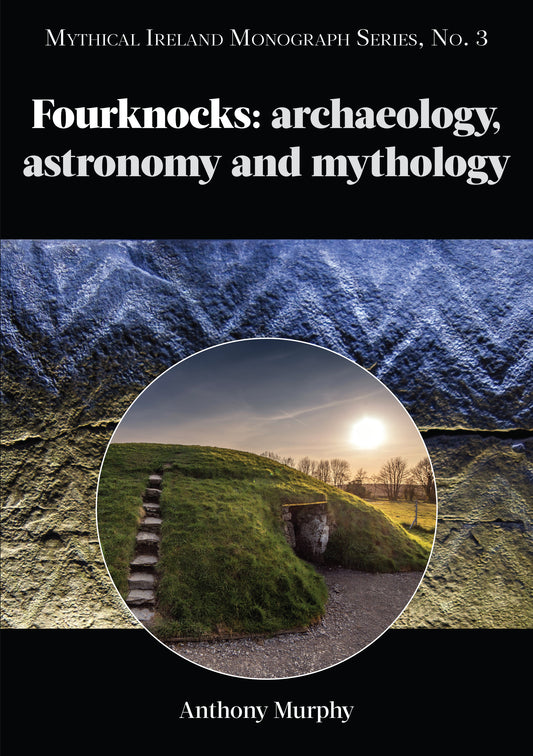
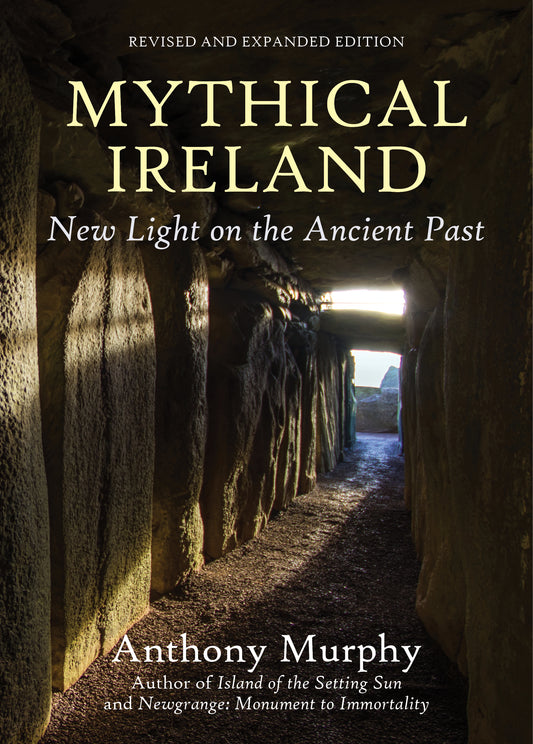
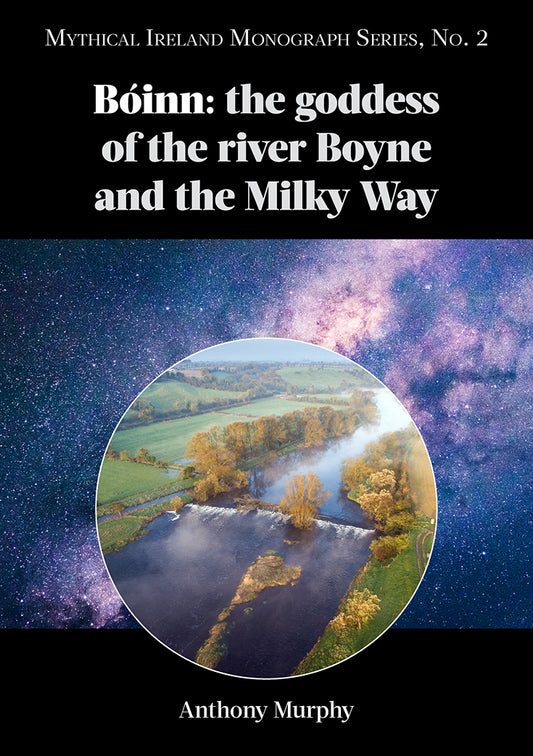
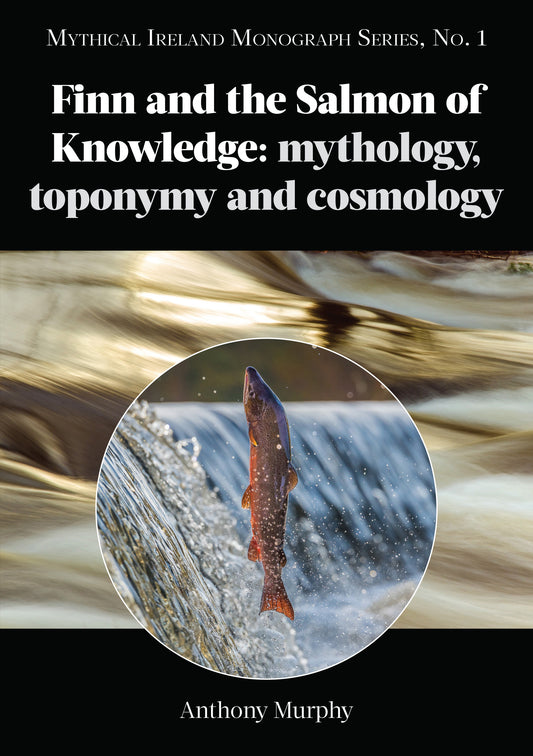

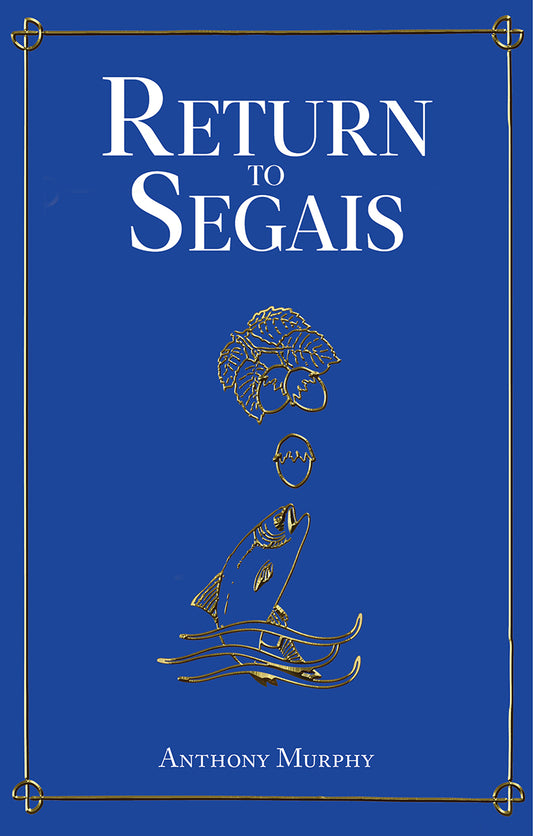
2 comments
James Lutzuk, please provide some evidence for your claim about the ancient Irish worshipping ‘Cora the snake goddess’.
The ancient Irish worshipped Cora the snake goddess which Christianity banished.